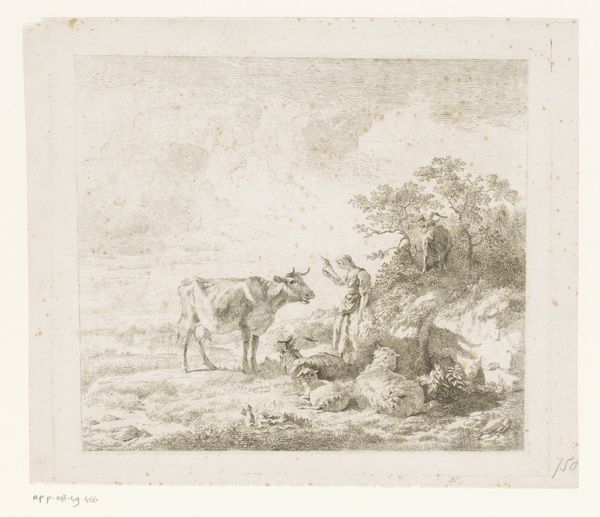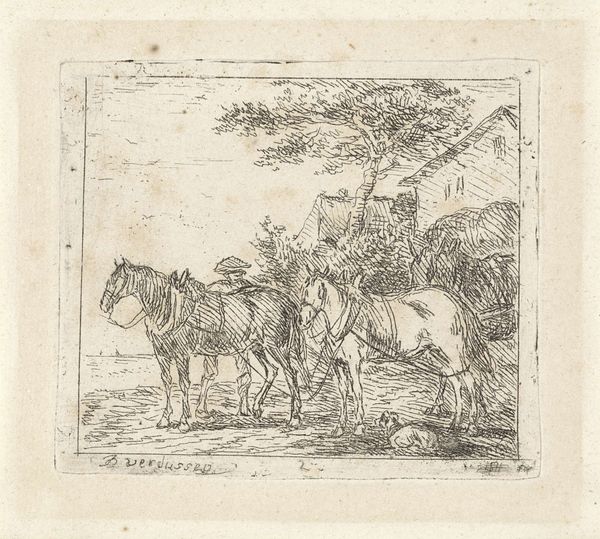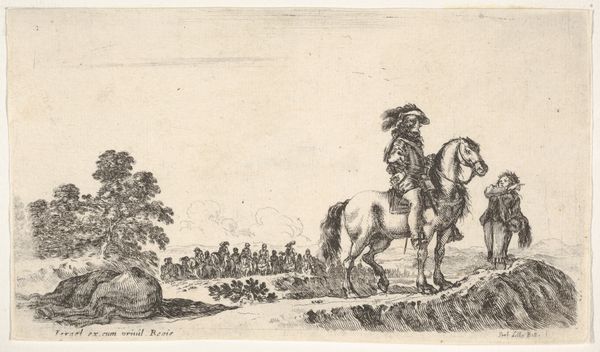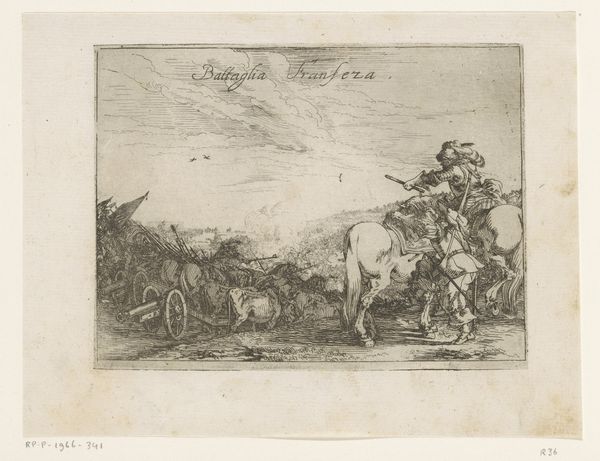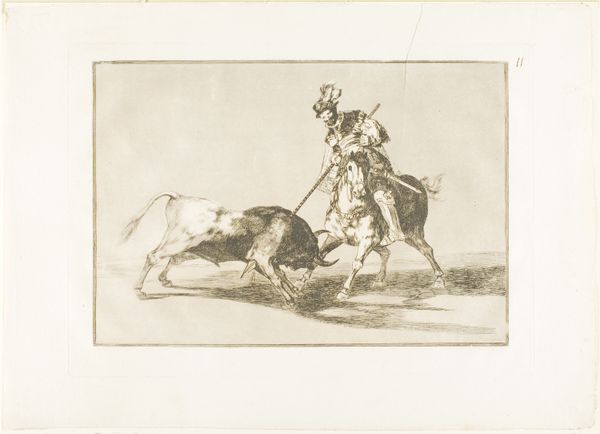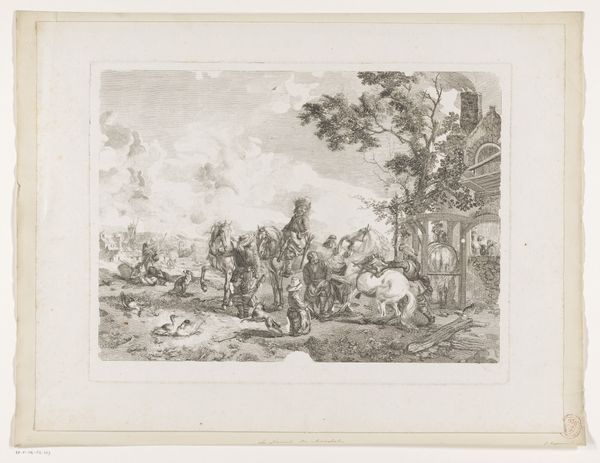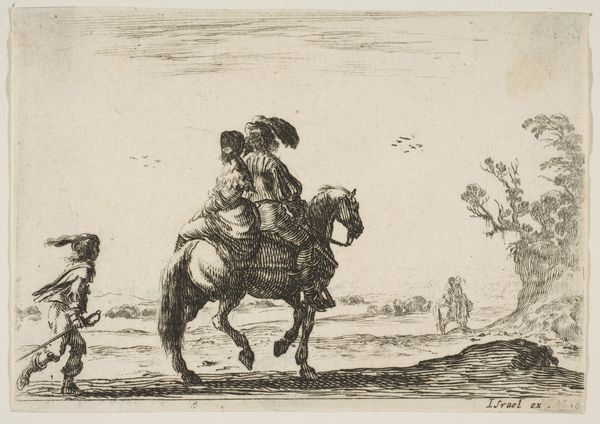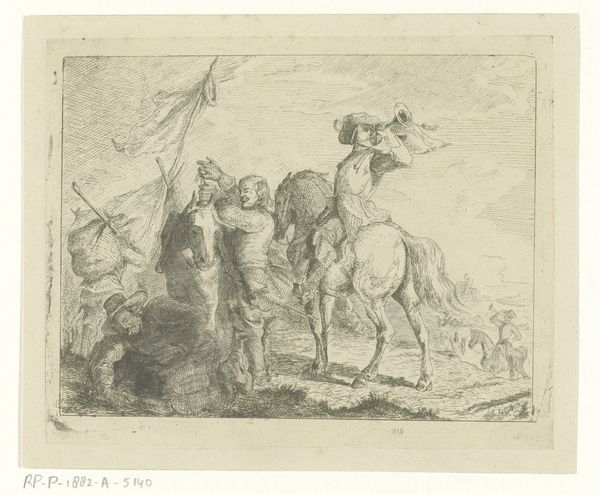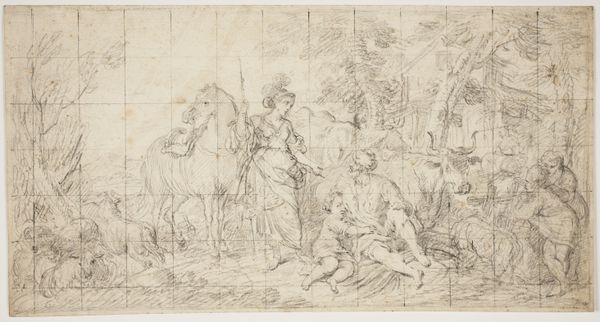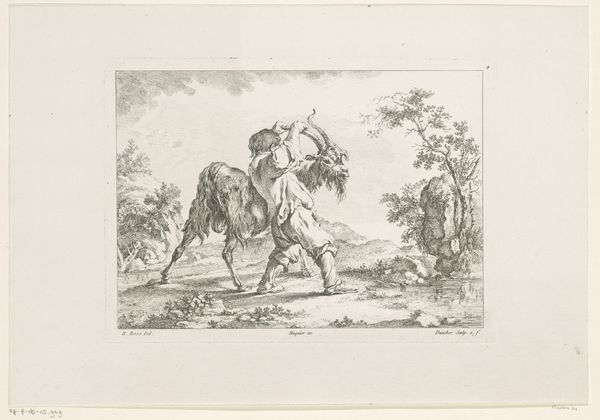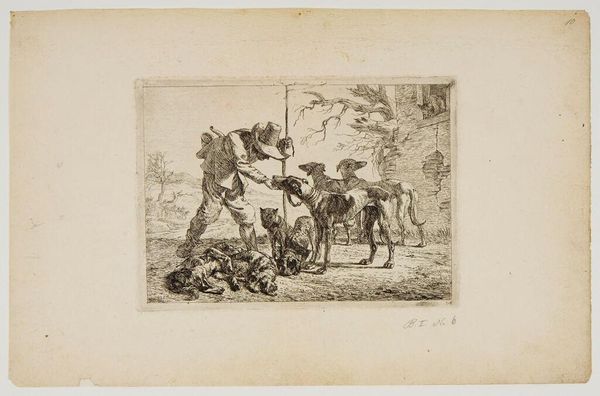
print, etching
# print
#
etching
#
landscape
#
etching
#
figuration
#
genre-painting
#
realism
Dimensions: height 101 mm, width 131 mm
Copyright: Rijks Museum: Open Domain
Editor: This is Jan Stobbaerts’s “Landschap met man te paard en vrouw met hark,” or “Landscape with man on horseback and woman with rake,” an etching from 1860. It’s quite detailed, with a definite rural, perhaps even romantic, feel. What stands out to you? Curator: Well, I see a potent snapshot of the social dynamics of the era. Think about it – we have a man on horseback, literally elevated above the woman with a rake. This immediately suggests a power dynamic, doesn’t it? The etching, in its realistic depiction of labour and leisure, reflects the inequalities inherent in 19th-century rural society. Do you think Stobbaerts was aware of this commentary? Editor: Possibly? The Realism movement was becoming prominent. I'm curious, could the woman with the rake represent the changing role of women in labour? Curator: Absolutely! We can view this in dialogue with broader narratives of the period. Consider the increasing industrialisation pushing rural populations, particularly women, into different kinds of labour. This woman with the rake, pausing to interact with the man, might symbolise a disruption to traditional gendered roles within the agricultural landscape. The dog seems like an allegorical bridge. What’s your take? Editor: That’s insightful! Perhaps the dog signals loyalty or dependence? Seeing it in this light, the whole landscape appears to be carefully arranged to illustrate social hierarchy and the shifting roles of women and rural workers. Thank you for that analysis! Curator: And thank you. This kind of nuanced reading enriches our understanding of not just art history but its ongoing relevance. Considering gender, class, and labor, allows us to view it not just as a pastoral scene but as a window into a complex social reality.
Comments
No comments
Be the first to comment and join the conversation on the ultimate creative platform.


